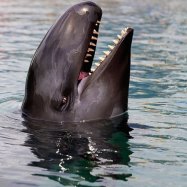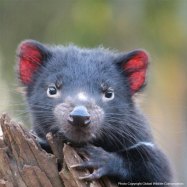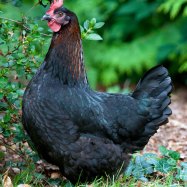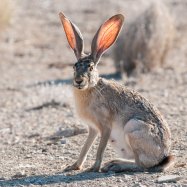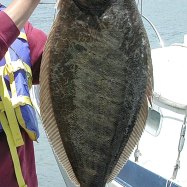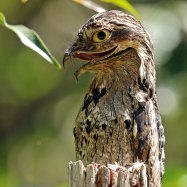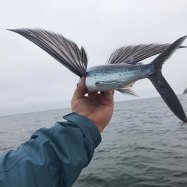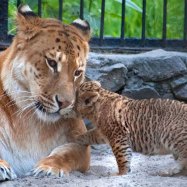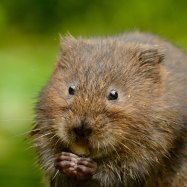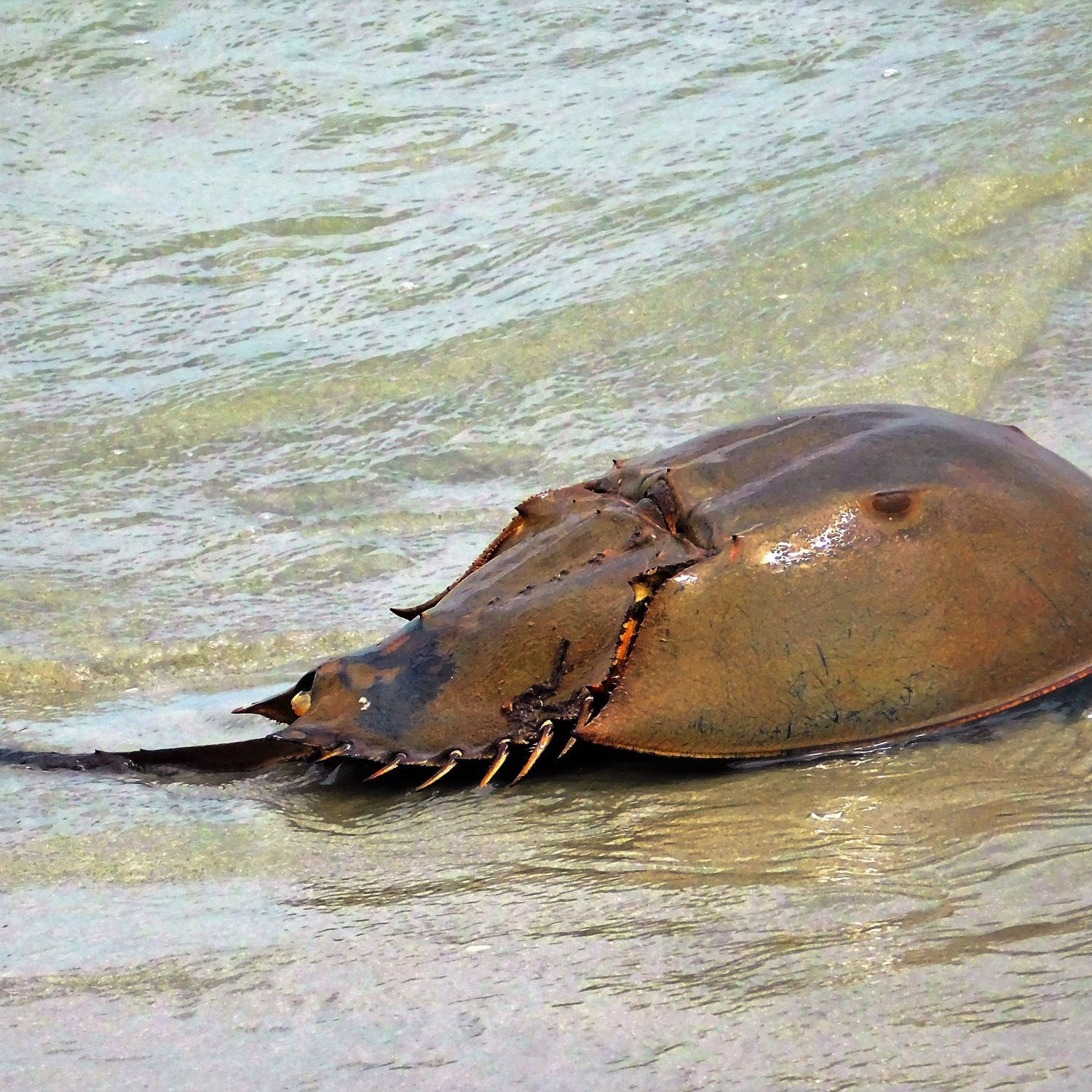
Horseshoe Crab
Up to 24 inches (61 cm)
The horseshoe crab, known for its long lifespan and unique hard shell with a horseshoe-shaped carapace, can grow up to 24 inches in length. They are commonly found in sandy beaches and shallow waters, belonging to the family Limulidae. These fascinating creatures play a crucial role in maintaining the health of marine ecosystems. #horseshoecrab #marineecosystems #hardshell #limulidae
Animal Details Summary:
Common Name: Horseshoe Crab
Kingdom: Animalia
Habitat: Coastal areas, estuaries, and shallow waters
The Remarkable Horseshoe Crab: A Window into Earth's History
The coastal waters of North America are home to one of the most fascinating and ancient creatures on the planet - the horseshoe crab. With a scientific name of Limulus polyphemus, this animal is commonly known as the horseshoe crab due to its hard shell with a horseshoe-shaped carapace. But beyond its distinctive appearance, the horseshoe crab holds many secrets, making it a popular subject of study and fascination among scientists and nature enthusiasts alike.Ancient Origins
The horseshoe crab belongs to the Animalia kingdom and the Arthropoda phylum, meaning it is classified as a distant relative of insects, spiders, and crustaceans Horseshoe Crab. Its class is Merostomata, which translates to ‘legs as knives’, and its order Xiphosura includes only four living species, among which the horseshoe crab is the only one found in the Atlantic Ocean.According to fossil records, horseshoe crabs have been around for over 450 million years, predating the dinosaurs. This makes them one of the oldest species on Earth, with little change in their appearance over the centuries. They are truly a living fossil, giving us a glimpse into the past and how life evolved on our planet.
Habitat and Distribution
Horseshoe crabs can be found along the eastern coast of North America, from the Gulf of St. Lawrence in Canada to the Yucatan Peninsula in Mexico. They are also found along the coast of Florida and in the Gulf of Mexico. These creatures inhabit coastal areas, estuaries, and shallow waters, making the Atlantic coast of North America their primary home.Within their habitats, horseshoe crabs prefer soft sandy beaches and shallow waters with little or no waves Hammonds Flycatcher. This is because they mate and lay their eggs in these areas, requiring calm waters for successful reproduction. They can also be found in deeper waters, but only during high tide, as they are not strong swimmers and can easily be swept away by strong currents.
Feeding Habits
The horseshoe crab is primarily a scavenger, feeding on dead fish, shrimp, mollusks, and other small marine animals. However, they are also known to be opportunistic predators, using their sharp chelicerae (mouth appendages) to catch and crush smaller prey.During the breeding season, horseshoe crabs feed extensively on mollusks and small crustaceans to gain energy for mating and egg-laying. This makes them an important part of the marine ecosystem, as they help control the population of these smaller creatures, preventing them from becoming overabundant.
A Useful Resource
Aside from their ecological importance, horseshoe crabs have been used by humans for centuries. Native Americans used their sharp tails for spear tips, while their eggs were used as a source of food. In the 19th century, horseshoe crabs were harvested for their blood, which contains a compound used in the biomedical industry to detect bacteria in medical devices.Today, horseshoe crabs are also used as bait by fishermen, and their shells are used to make fertilizer and poultry feed. However, conservation efforts and regulations have been put in place to prevent the overexploitation of this important species.
Fascinating Adaptations
One of the most interesting aspects of horseshoe crabs is their unique body shape. Their hard shell, or carapace, is thick and armor-like, providing them with protection from predators. The horseshoe shape of their carapace also serves as a shield for their soft underside, which houses important organs.Their shell is not just tough, but also has remarkable regenerative properties. As horseshoe crabs grow, they shed their old shell and grow a new one over a period of a few weeks. This process is known as molting and occurs multiple times throughout their lifespan, allowing them to grow and adapt to their changing environment.
The Mysterious Blood of the Horseshoe Crab
As mentioned earlier, horseshoe crabs have a unique blood composition that has proven to be extremely valuable for medical purposes. The compound present in their blood, called Limulus amebocyte lysate (LAL), is used in the biomedical industry to detect bacterial contamination in medical supplies.Horseshoe crab blood is blue in color, due to the presence of copper-based hemocyanin, which carries oxygen in their blood instead of hemoglobin like most other animals. This unique composition also makes their blood extremely useful for research purposes, as it does not clot easily and can be used to study human blood disorders and diseases.
A Declining Population
Despite their long history on Earth, horseshoe crabs are facing threats to their existence. The population decline is mainly due to coastal development, overharvesting, and habitat destruction. As a result, horseshoe crab populations in some areas have decreased significantly, affecting the marine ecosystem and posing a potential risk to human health, as their blood is a vital component in the detection of harmful bacteria.To ensure the survival of this ancient species, conservation efforts have been put in place in various locations along the Atlantic Coast. These include restricting the harvesting of horseshoe crabs, preserving their habitats, and monitoring their population.
The Role of Horseshoe Crabs in NLP
Beyond their intriguing physical and biological characteristics, horseshoe crabs are also being studied for technological advancements. Researchers have been studying their unique vision and navigation abilities to develop autonomous robots and drones that can navigate underwater environments.Their blood and immune system are also being studied for possible advancements in the field of biotechnology and medical research. Horseshoe crabs are also being incorporated into NLP research, as they have a unique and simple nervous system that can help in understanding basic sensory and motor functions.
Final Thoughts
The horseshoe crab may not be the most talked-about creature, but it is undoubtedly one of the most fascinating. From their ancient origins to their unique adaptations and contributions to scientific advancements, this creature embodies the resilience and wonder of life on our planet.However, the declining population of horseshoe crabs is a reminder of the impacts of human activity on our environment and the delicate balance of ecosystems. It is crucial to protect and preserve this iconic species, not just for its own survival, but also for the benefit of future generations. The horseshoe crab is truly a window into Earth's history, and we must continue to study and appreciate this incredible animal.

Horseshoe Crab
Animal Details Horseshoe Crab - Scientific Name: Limulus polyphemus
- Category: Animals H
- Scientific Name: Limulus polyphemus
- Common Name: Horseshoe Crab
- Kingdom: Animalia
- Phylum: Arthropoda
- Class: Merostomata
- Order: Xiphosura
- Family: Limulidae
- Habitat: Coastal areas, estuaries, and shallow waters
- Feeding Method: Scavengers and predators
- Geographical Distribution: Atlantic coast of North America
- Country of Origin: United States
- Location: Sandy beaches and shallow waters
- Animal Coloration: Brownish-green
- Body Shape: Hard shell with a horseshoe-shaped carapace
- Length: Up to 24 inches (61 cm)
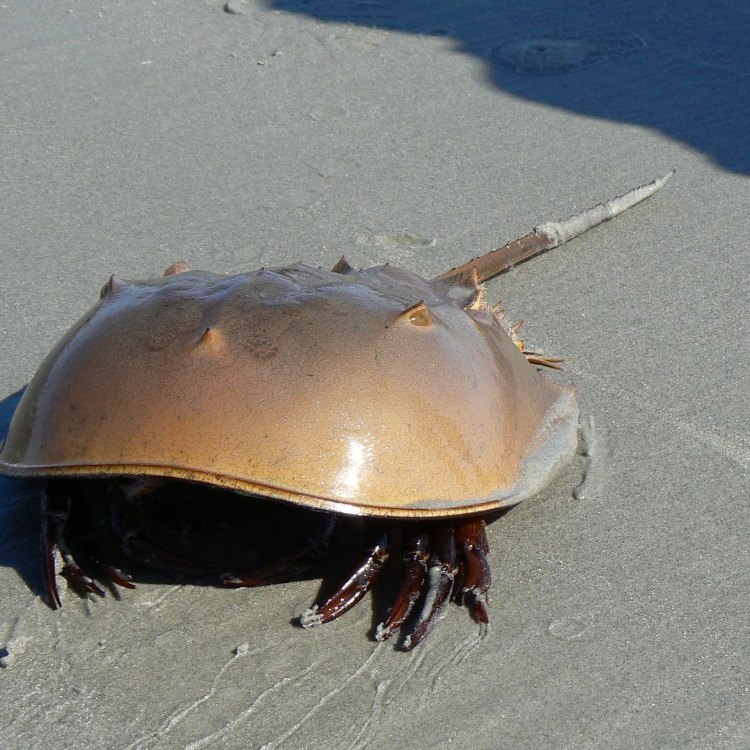
Horseshoe Crab
- Adult Size: Medium-sized
- Average Lifespan: 20-40 years
- Reproduction: Sexual
- Reproductive Behavior: Mating occurs during high tide on sandy beaches
- Sound or Call: No sound production
- Migration Pattern: Migrates from deep waters to shallow waters for spawning
- Social Groups: Solitary
- Behavior: Nocturnal, bury themselves in the sand during the day
- Threats: Habitat loss, overharvesting for bait and biomedical purposes
- Conservation Status: Data Deficient
- Impact on Ecosystem: Provide food for other species, important in biomedical research
- Human Use: Used as bait in fishing, blood used for medical purposes
- Distinctive Features: Long, pointed tail and a hard exoskeleton
- Interesting Facts: Horseshoe crabs are not true crabs but are more closely related to spiders and scorpions.
- Predator: Sharks, sea birds, and fish
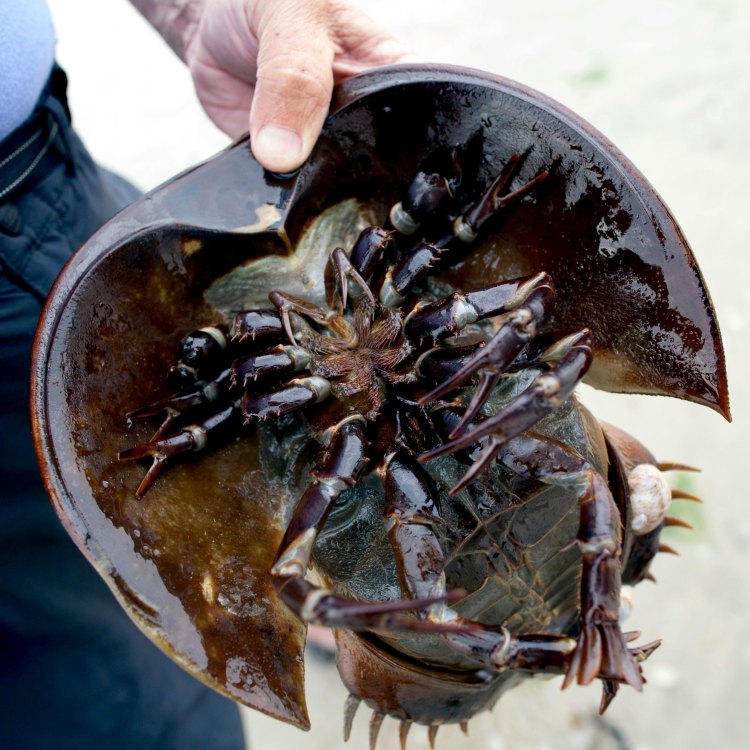
Limulus polyphemus
The Marvelous World of the Horseshoe Crab: Exploring the Unique Features of an Ancient Creature
In the vast world of marine life, there are countless fascinating and unique creatures that roam the oceans. One such creature, with its intriguing anatomy and behavior, is the horseshoe crab. This ancient arthropod, which has been around for millions of years, has captured the curiosity of scientists and the imagination of the public alike. In this article, we will dive deep into the world of the horseshoe crab and explore its distinctive features and its impact on the environment and human life PeaceOfAnimals.Com.Adult Size and Average Lifespan
Contrary to its name, the horseshoe crab is not an actual crab but a distant relative of spiders and scorpions. These creatures are medium-sized and can reach up to 60 centimeters in length. They have a hard, horseshoe-shaped exoskeleton that protects their soft bodies, and their bodies are divided into three sections: the cephalothorax, the abdomen, and the tail.
Horseshoe crabs are also known for their long lifespan, with an average of 20-40 years in the wild. This is a remarkable feat, considering these creatures have been around for over 450 million years, making them one of the oldest species on the planet.
Reproduction and Reproductive Behavior
Horseshoe crabs have a complex and fascinating reproductive process. They have separate sexes, with males identified by their smaller size and modified first pair of legs for clasping onto females during mating. Mating usually occurs during high tide on sandy beaches, where the horseshoe crabs gather in large numbers to lay their eggs.
During mating, the male horseshoe crab will cling onto the back of the female and fertilize her eggs as she lays them in shallow water Hyacinth Macaw. This behavior is essential because horseshoe crab eggs must be deposited in shallow waters to hatch. Once the eggs are fertilized, the female will bury them in the sand, where they will incubate for several months before hatching.
Sound or Call, Migration Pattern, and Social Behavior
Unlike many other marine creatures, horseshoe crabs do not produce any sounds. They communicate through their behavior, such as releasing pheromones in the water to signal their readiness to mate.
Horseshoe crabs are also notable for their annual migration pattern. They usually live in deep waters, but during mating season, they migrate to shallow waters, often traveling long distances to reach their preferred spawning areas. This migration is essential for their survival and reproduction, and it also serves an important ecological purpose.
Interestingly, these ancient creatures are solitary and do not form social groups. They prefer to live and hunt alone, except during mating season, when they gather in large numbers on beaches.
Nocturnal Behavior and Threats
Horseshoe crabs are primarily nocturnal creatures, meaning they are most active at night. During the day, they bury themselves in the sand, with only their eyes and tail visible above the surface. This behavior serves as a defense mechanism, protecting them from predators and harsh environmental conditions.
However, despite their unique adaptations, horseshoe crabs face numerous threats from human activities. One of the most significant threats to their survival is habitat loss due to coastal development and destruction of spawning sites. Overharvesting for bait, especially for fishing industries, also poses a significant risk to horseshoe crabs.
Conservation Status and Impact on Ecosystem
Unfortunately, due to a lack of adequate data, the conservation status of horseshoe crabs is listed as Data Deficient on the IUCN Red List. This means there is insufficient information to evaluate the species' population and determine their conservation status accurately.
However, horseshoe crabs play a vital role in their ecosystem, providing food for other species such as birds, fish, and sharks. Their eggs, which contain nutrient-rich yolks, are a vital food source for migratory shorebirds, and their larvae also serve as food for various marine animals. Additionally, horseshoe crabs are essential in the biomedical field, with their blood being used to detect bacterial contamination in medical supplies and vaccines.
Human Use and Distinctive Features
Horseshoe crabs have a significant impact on human life as well. In many coastal communities, they are used as bait for commercial fishing, commonly for eels and whelks. Although their blood is also used for medical purposes, the horseshoe crab population is not extensively harvested for this purpose, as it can be harmful to their survival. Efforts are being made to develop sustainable alternatives to using horseshoe crab blood in biomedical research.
One of the most distinctive features of horseshoe crabs is their long, pointed tail, which is used for balance and steering while swimming. Their hard exoskeleton also makes them stand out, and the outer layer of their shell is covered in tiny spikes, acting as a protective barrier against predators.
Interesting Facts and Predators
Aside from their unique anatomy and behavior, there are many other interesting facts about horseshoe crabs. As mentioned earlier, they are not actual crabs but are more closely related to spiders and scorpions. Unlike most species, horseshoe crabs do not have a single pair of eyes. Instead, they have nine, including two compound eyes and seven simple eyes, giving them excellent vision. They also have blue blood, which is due to the presence of copper instead of iron-based hemoglobin.
In their natural habitat, horseshoe crabs face predation from various species, including sharks, sea birds, and fish. However, one of the most significant threats to their survival is human activities, as mentioned earlier.
The Importance of Protecting Horseshoe Crabs
In conclusion, the horseshoe crab is a unique and ancient creature with distinctive features and a vital role in the ecosystem. However, their populations are facing numerous threats, and without proper conservation measures, they may soon become endangered.
It is essential to raise awareness about the importance of protecting and preserving horseshoe crabs. This can be achieved through sustainable fishing practices, protecting their spawning areas, and reducing coastal development that can destroy their habitat. Further research and monitoring of their populations are also necessary to accurately assess their conservation status and implement effective conservation plans.
Let us appreciate the marvelous world of the horseshoe crab, and work towards ensuring their survival for future generations to marvel at and learn from.
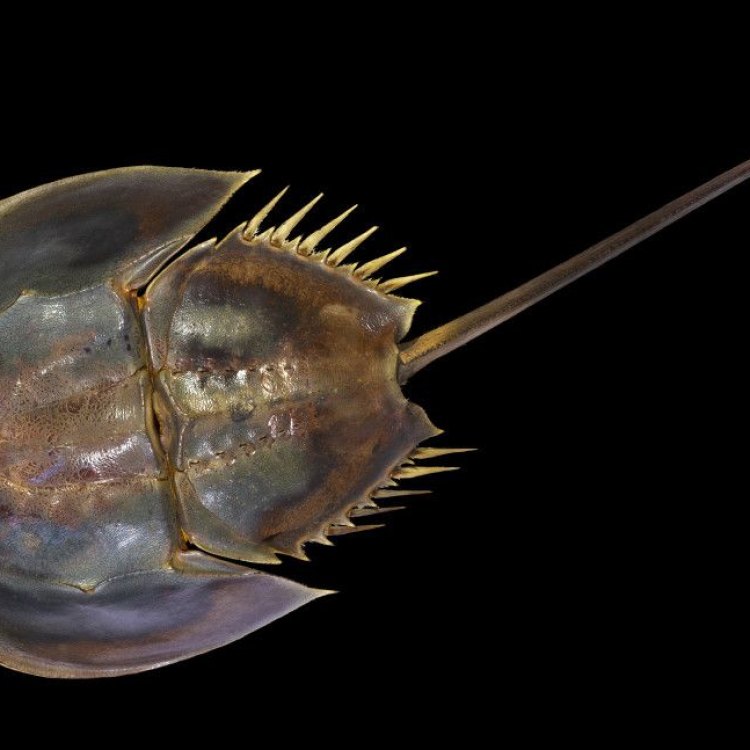
The Remarkable Horseshoe Crab: A Window into Earth's History
Disclaimer: The content provided is for informational purposes only. We cannot guarantee the accuracy of the information on this page 100%. All information provided here may change without prior notice.


